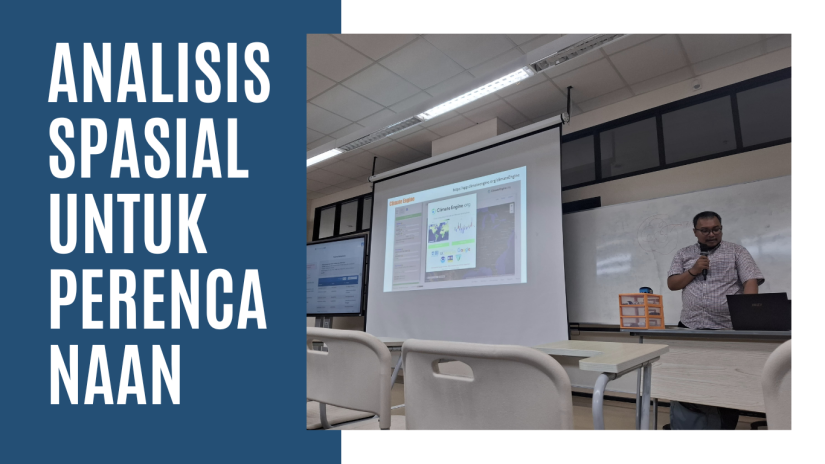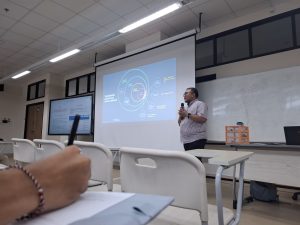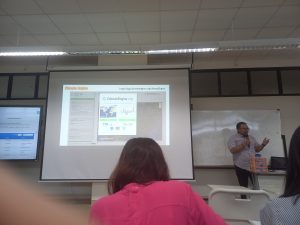Yogyakarta, March 3, 2025 – The Urban and Regional Planning Program at Universitas Gadjah Mada (PWK UGM) held another guest lecture as part of the Data Analysis Methods and Techniques course. The lecture, titled Spatial Analysis for Planning, featured Firman Afrianto, S.T., M.T.—a practitioner and consultant in urban and regional planning from PT Sagamartha Ultima—as the main speaker.
The event took place at SGLC Room 5B2 and was opened by the course instructor, Isti Hidayati, S.T., M.Sc., Ph.D., who also gave an introduction highlighting the importance of spatial analysis in modern urban planning. The lecture aimed to provide students with deeper insight into the concepts and techniques of spatial analysis and its application in data-driven planning.
In his presentation, Firman Afrianto explained how spatial analysis plays a crucial role in urban and regional planning, particularly in understanding patterns, relationships, and spatial dynamics. He emphasized that technologies such as Geographic Information Systems (GIS) and remote sensing have empowered planners to visualize spatial data more comprehensively, enabling more accurate and evidence-based decision-making.
The lecture also covered various mapping methods and spatial data analysis techniques used in planning projects, including land-use change analysis, accessibility modeling, and disaster risk mapping. Firman underscored that proficiency in spatial analysis has become an essential skill for urban planners in the digital age, especially in supporting the achievement of the Sustainable Development Goals (SDGs).
The lecture aligns with several SDG targets, including SDG 4 (Quality Education), SDG 9 (Industry, Innovation, and Infrastructure), SDG 11 (Sustainable Cities and Communities), and SDG 17 (Partnerships for the Goals). With the continued advancement of technology and the growing availability of spatial data, a thorough understanding of spatial analysis is expected to help planners create more inclusive, sustainable, and resilient cities and regions.
The guest lecture received enthusiastic participation from students, who actively asked questions and engaged in discussions about the challenges and opportunities in applying spatial analysis in real-world planning practice. This session also offered valuable exposure to insights from professional practitioners, equipping students with practical knowledge to support their future careers.
Source: https://pwk.archiplan.ugm.ac.id/after-report-kuliah-tamu-analisis-spasial-untuk-perencanaan



